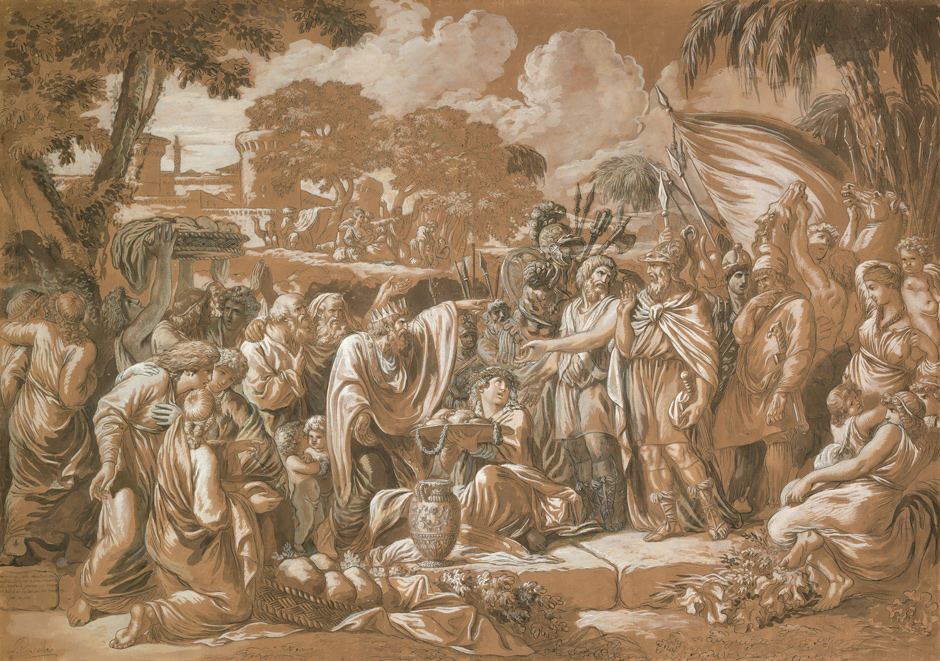Loading the page ...
Pierre Lelu
(1741–1810, Paris)
The Meeting between Abraham and Melchizedek, Genesis 14. Pen and black ink, brown wash, white heightening, on brown-grounded paper. 53.7 x 76.0 cm. Signed: “P. Lelu”, inscribed in Latin in the artist’s own hand: “ab hostium caede ... Gen: ca. 14.” .
This monumental scene is distinguished by the painstaking, detailed manner of its composition and the skill with which Lelu enables the numerous protagonists to engage in meaningful interaction, integrating them harmoniously into the landscape. It portrays the meeting described in chapter 14 of the Book of Genesis between Abraham and the Old Testament king and high priest Melchizedek, in which the latter sacrifices bread and wine and blesses Abraham. Abraham thereupon pays Melchizedek the tithe. The giving of bread and wine serves as an allusion to the Christian sacrament of the Eucharist, whereas the blessing and the paying of the tithe reflect the subordination of the Old Covenant to the New Covenant. The painter, draughtsman and etcher, Pierre Lelu, was a pupil of François Boucher and Gabriel François Doyen. In 1762 he went to Italy, where he mostly copied Old Masters, returning to Paris around 1767. He is known to have undertaken two further journeys to Italy in 1775 and 1789. Lelu also travelled to Spain and Portugal in 1775. The artist became a member of the Academy in Marseilles in 1778, but was never admitted to the Académie royale in Paris. While only a few of his paintings have survived, his drawings and his prints, in particular, are quite substantial.
In stylistic terms the present work fits neatly into a group of drawings Lelu exhibited at the Paris Salon of 1793 (see, for example, The Sacrifice of Polyxena, illustrated in the catalogue La tentation du dessin. Une collection particulière, published by D. Radrizzani, Musée Jenisch Vevey 2012, no. 107, pp. 224–225). This was the only occasion on which Lelu was able to participate in the Salon as a non-academic, as the monopoly of the académiciens ended that year. The large-format, carefully composed drawings are executed in an identical technique, for which Lelu used brown-grounded paper. Fluent, broadly applied brown washes and striking white heightenings produce a concise graphic effect similar to that of a chiaroscuro woodcut. Compared to the revolutionary style of the David school, Lelu’s somewhat cumbersome formal idiom makes his work appear antiquated and not quite up with the times. His classicism is still strongly influenced by the aesthetics of the 18th century and the taste characteristic of the period of Louis XV, which may explain why Lelu failed to achieve a major artistic breakthrough despite his unquestionable talent.
